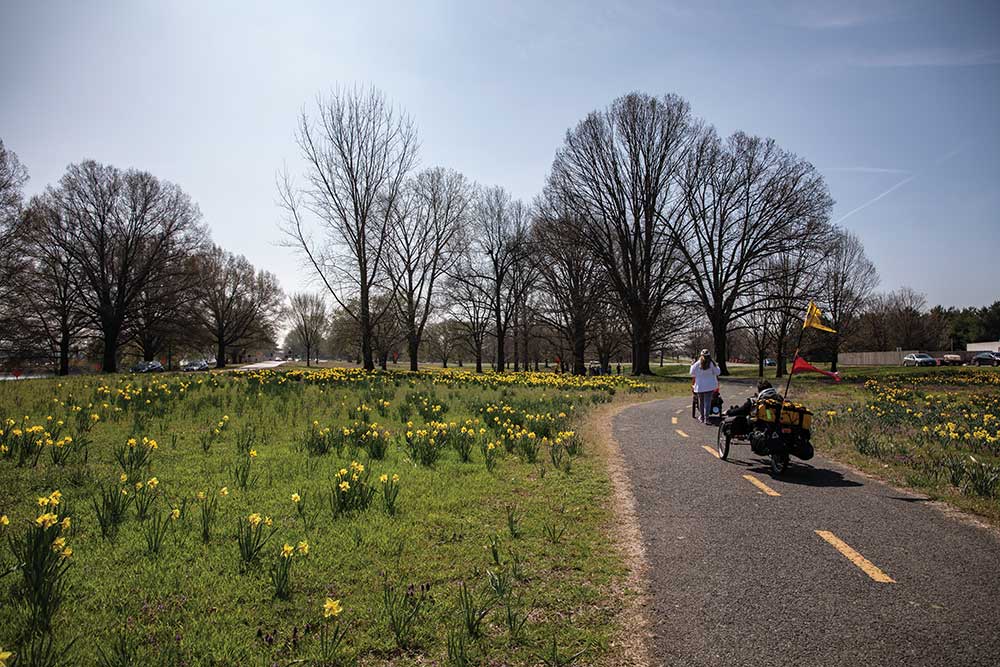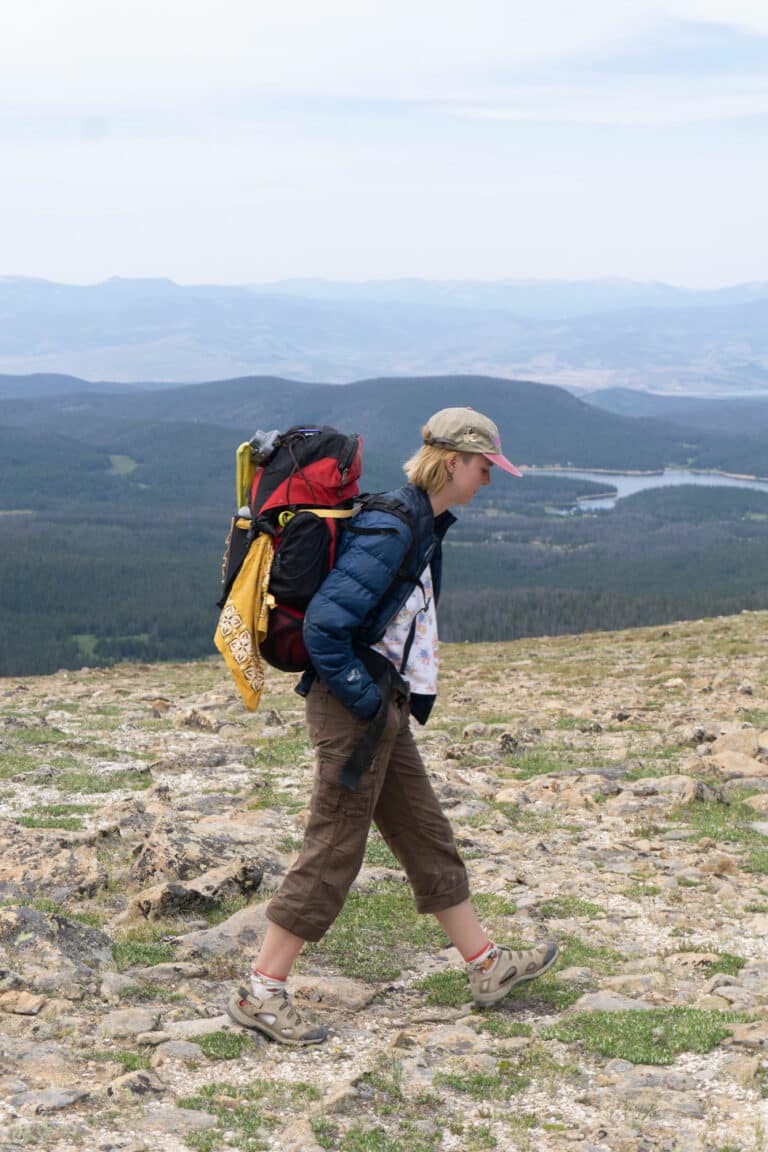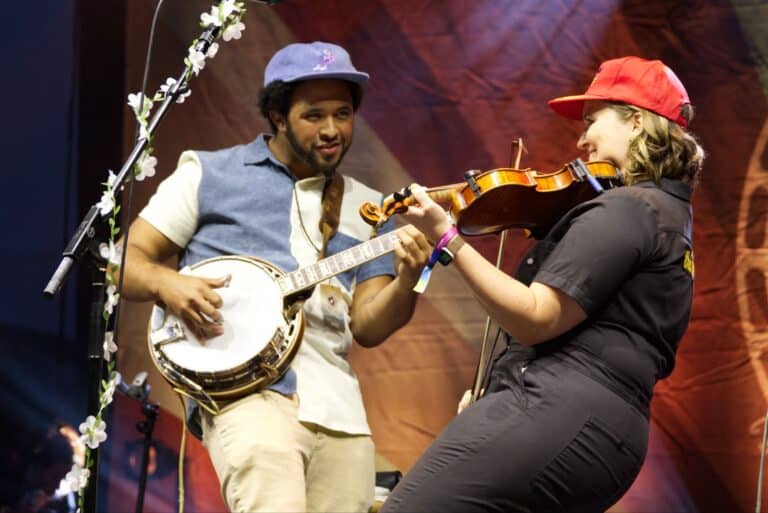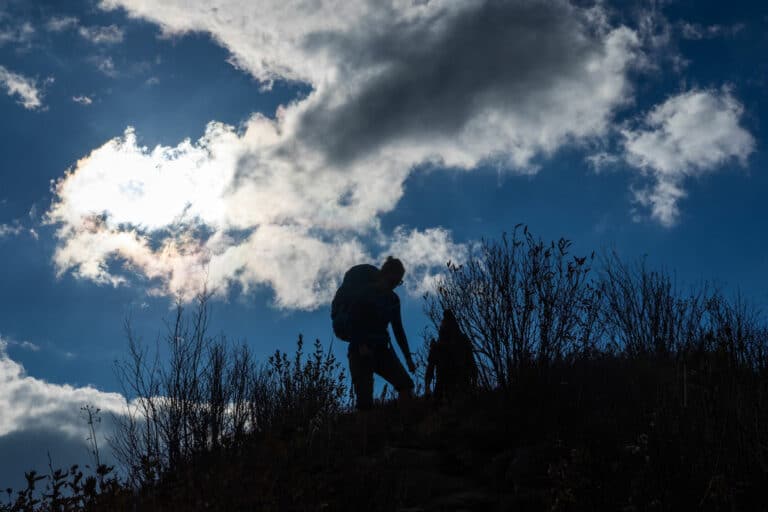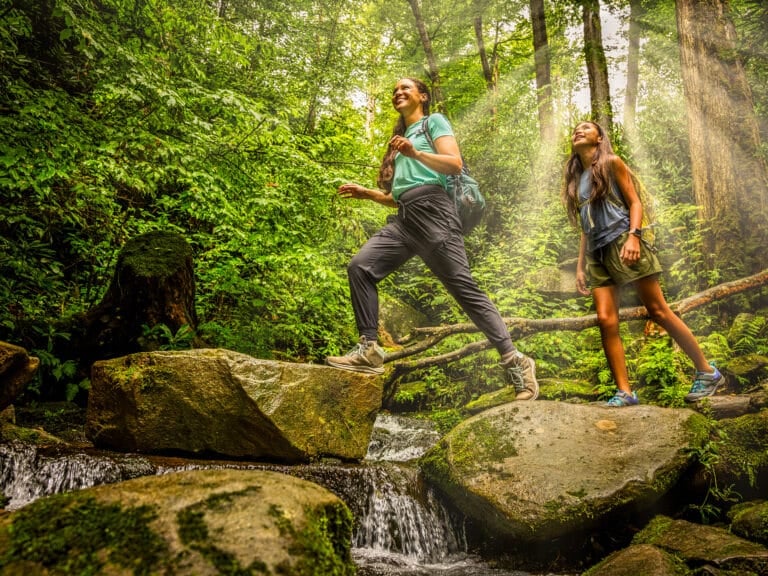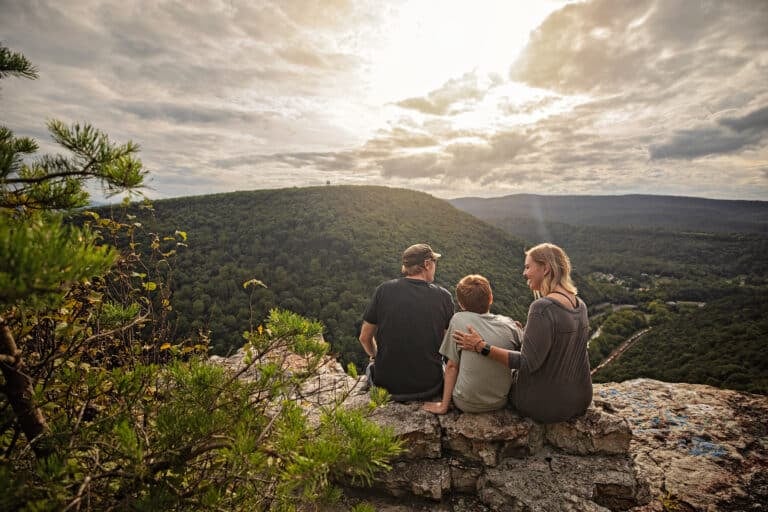Have you ever wanted to just head out onto the road and see where life takes you? BRO talked with some people who did just that. We found out how they are traveling, what they wish they had known before starting their trip, and the things they left behind for a life on the road.
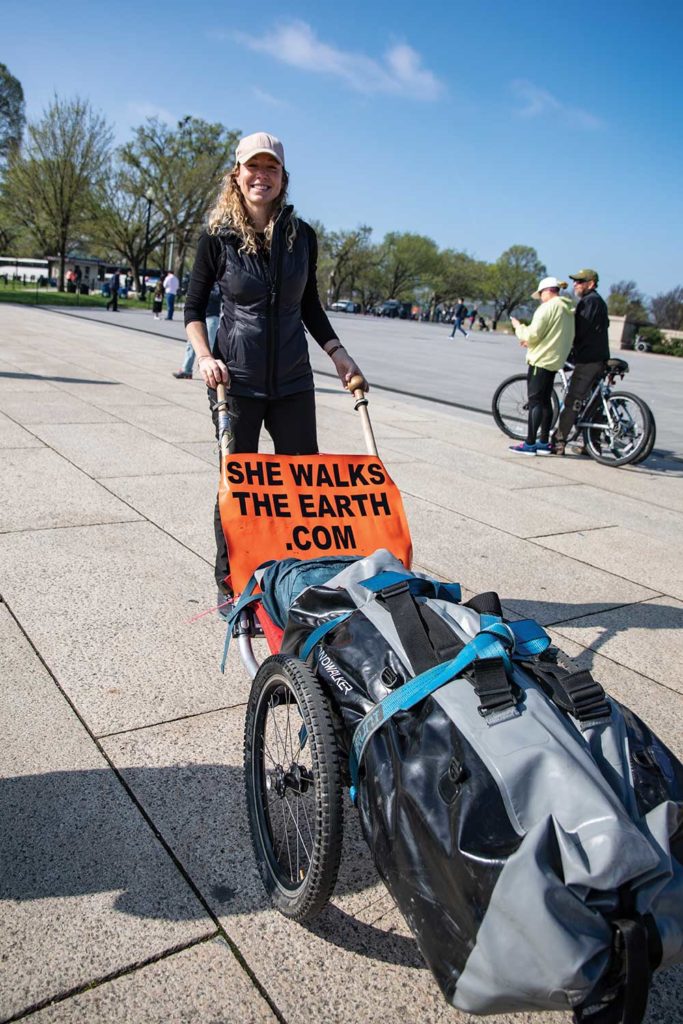
By Foot
When Angela Maxwell left Bend, Oregon, to walk around the world, she left one box of stuff at her friend’s house. Everything else, she sold to help fund her walk.
“It has books and a pair of cowgirl boots in it,” Maxwell said. “I just couldn’t part with them for some reason.”
Walking around the world wasn’t some grand adventure that Maxwell had planned for years.
“I started it because I felt called,” she said. “I couldn’t explain it. I can’t say I loved walking and so I decided I wanted to walk the world. No, it was just you are supposed to go walking. That’s the package it came in. I don’t want the Pacific Coast Trail or the Appalachian Trail, I want the world.”
Before starting her own adventure, Maxwell spent a few days walking with Karl Bushby. Since 1998, Bushby has been attempting to walk an unbroken path around the world.
“Watching him cook his meals or pitch his tent, I was thinking, ‘How am I going to do this?’” Maxwell said. “I was borrowing a friend’s gear and had never pitched a tent. Some people would probably judge the fact that you don’t want to do things like that unprepared. But I was just so excited about giving it a shot with someone who knew what they were doing that I was willing to make a complete fool of myself.”
She picked up a lot from Bushby and other walkers, like Rosie Swale-Pope, about the equipment she would need on the road.
“I thought a backpack would be the way to go,” Maxwell said. “However, luckily, there are people before me that have done crazy walking, running journeys. I couldn’t carry enough and that just sounds excruciating. I’ve done enough hikes to know that’s not going to feel good on my spine and shoulders.”
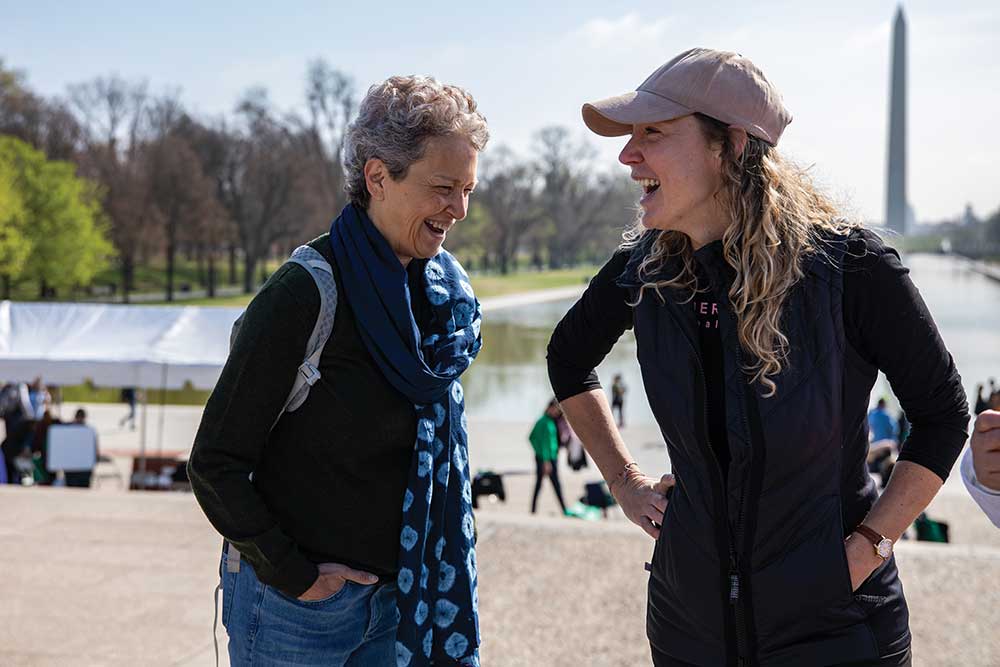
After a lot of trial and error, Maxwell eventually landed on a rickshaw pram that allows her to set the balance. She can push or pull it depending on the landscape and what feels more natural.
Once she got started, Maxwell learned a lot just by being on the road.
“I was definitely that novice adventurer carrying way too much,” she said. “I started out with 100 pounds of stuff, before water and food. I still had way too many clothes. I was carrying two air mattresses at one point. I forgot you can get things on the road.”
In the last five years, Maxwell has walked over 20,000 miles in 13 countries, including Australia, Mongolia, and Italy. She lives on five dollars or less a day and carries everything she needs in her cart, including her tent, air mattress, two sleeping bags, clothes, a bacterial and viral water filter, alcohol stove, camp chair, and flip flops to air out her feet.
As she walks from Washington, D.C., back to Oregon on the last leg of her journey, Maxwell is looking forward to finishing where she started.
“Five years on the road has been a good time for me to get to know myself a little better,” she said. “I think I saved the U.S. for last because I wanted to have the experience under my belt. I wanted it to feel like a homecoming. This point where I can walk up to my best friend’s house and be like, hey, I made it back.”
Maxwell is partnering with Her Future Coalition as she walks the United States, giving talks and inviting people to join her on the road for a few miles. She is helping the organization raise money to build a shelter for children at risk of human trafficking to have a place to go while their parents work.
“I chose, as a privileged American, to go walking around the world,” Maxwell said. “I chose to have no shelter. I chose to leave behind my business consulting. I chose to leave the comfort of my home and only walk with what fits into a duffel bag. I walk with a choice of where do I want to go? What country do I want to walk? What direction do I want to take? I feel a lot of freedom in being able to choose things.”
Tragedy and Survival
Maxwell’s walk has not been without its struggles. She got dengue fever from a mosquito bite and spent a month recovering in Vietnam.
And one night in Mongolia, a man raped her. She had set up her camp for the night, and as darkness fell, a man came into her tent and attacked her. She tried to fight back, but she couldn’t reach her axe. She survived, and when he left her tent, she huddled into a ravine to wait for the sun to rise.
“As I sat there that night, I knew that this was the big point that would change my life forever,” Maxwell said. “Do I go home, or do I just keep walking? When the sun rose, I put some Elle King in my ear, and I decided to keep walking. I knew that once I chose to continue walking, I had to not only forgive him, I had to forgive myself for thinking in any way I could have prevented it.”
The incident did not stop Maxwell from doing what she knew she was meant to do.
“The thing is, being fearless is a myth,” she said. “I think that’s become my perspective on the walk. I’m not fearless. And I don’t think people who do these extraordinary things are fearless. It’s more of how do people feel the fear, and then keep doing it knowing that the fear is still there.”
That’s something Maxwell wished she heard more about before she started her walk. She wanted to hear that the people she looked up to were just as terrified as she was.
“Everyone wants to know about the danger,” Maxwell said. “That’s what makes a good adventure story. But not everyone talks about the journey. Where does bravery and courage come from? Are people born with it? Are they naturally more courageous than other people? Or is it something that you can fine tune and sharpen. In my experience, it is something that is within all of us.”
Maxwell has found strength on her walk through the people she has met along the way.
“I’ve had people kind of veer on the road, pretending to hit me because they thought that was funny,” she said. “But I will say that the kindness of people outweighs the people who don’t know how to react to me. I wouldn’t have made it this far if it weren’t for the help of strangers that then become friends.”
While walking has become a lifestyle for Maxwell, she said she’s looking forward to having a place to come home to every night. But she doesn’t plan to give up walking entirely.
“I’d like to think that at my mom’s age, I’m walking across Croatia or something,” Maxwell said. “It could be a lifelong thing. I’m still walking around the world, just much slower. I have that in mind but who knows what life’s going to throw at me.”
1. She only goes through one pair of shoes a year but is constantly changing out the insoles.
2. She downloads offline maps from Pocket Earth to navigate.
3. She prefers trails but her cart usually doesn’t fit. She tries to find back roads with less traffic.
Watch a highlight reel of Angela Maxwell’s adventures around the world at blueridgeoutdoors.com
By Bike
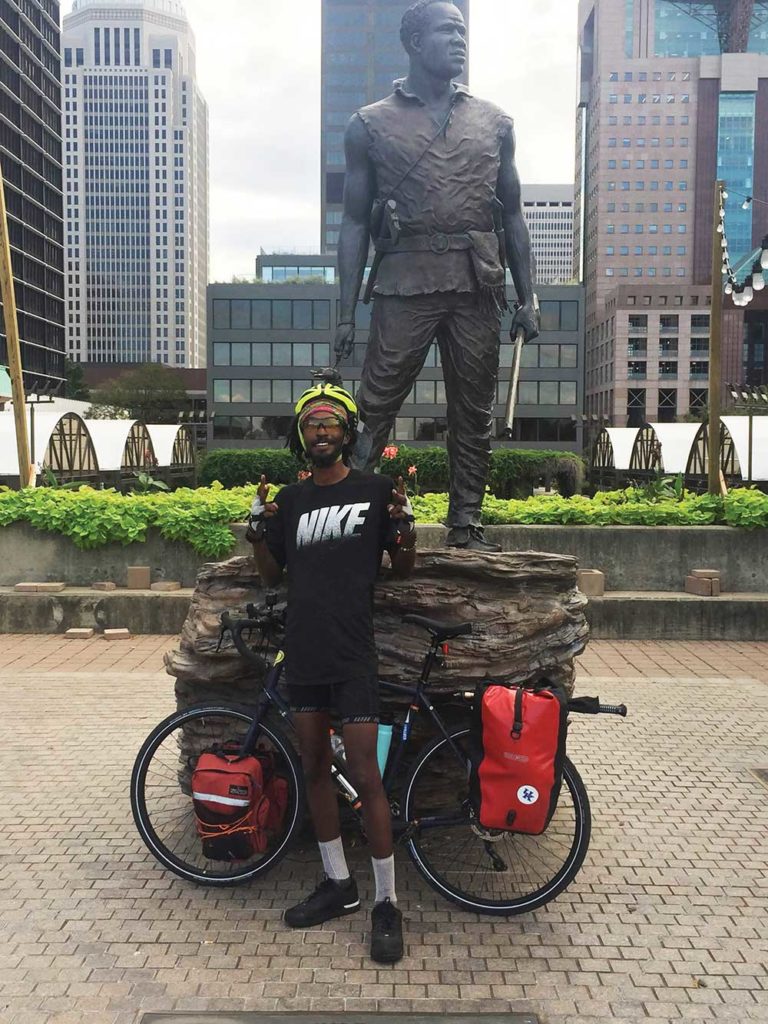
It didn’t take long for Daniel “The Blackalachian” White to decide he wanted to hike the Appalachian Trail. He started his thru hike in April 2017, three months after he first heard about the trail.
“After hiking the A.T. and getting to know a lot of people out there thru hiking, I realized that a lot of those people had been planning that trip for years,” White said. “They had a lot of connections to it. They may have grown up around one of those trails, maybe had a parent or family member who hiked the trail, just had more of a connection with it. I didn’t.”
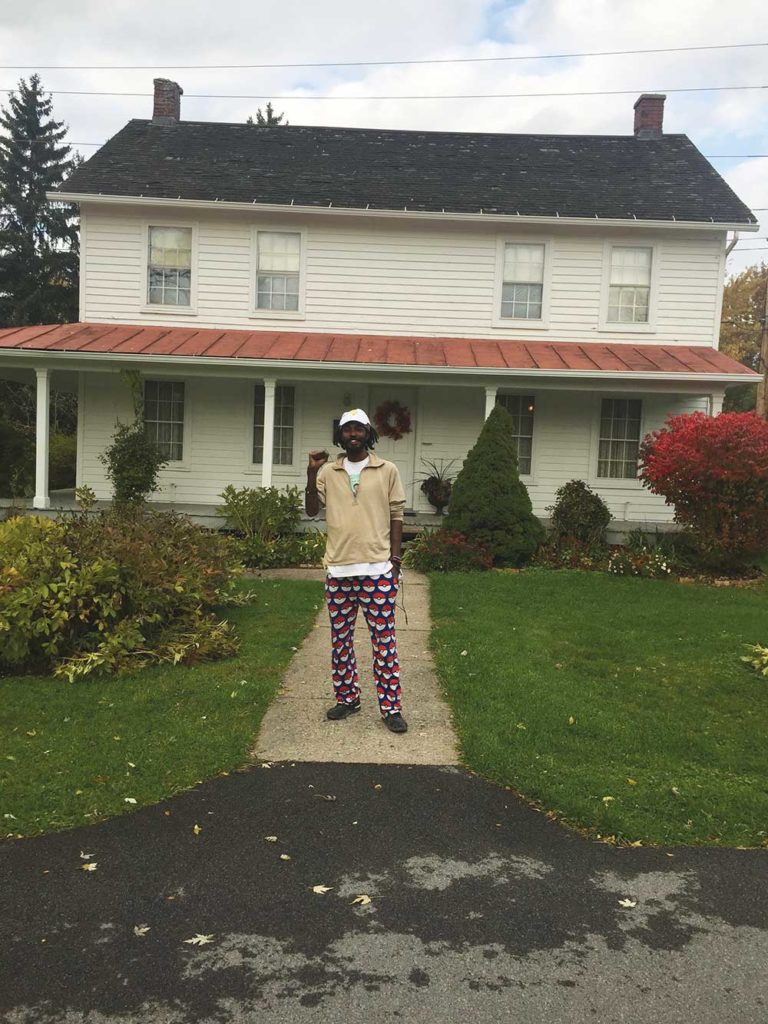
When he finished the trail in September, he started thinking about what his next trip might be and how it would differ from his thru hike.
“There was very little processing and getting to learn and have respect for it [the A.T.],” he said. “I felt kind of bad about that, actually. Somebody has been planning for four or five years and here I am like oh yeah, I’ll hike it. So, I wanted to find another trip that was more personal. Something I can get a little more culture and more feeling out of.”
While doing research online, White came across maps from the Adventure Cycling Association. That’s when he decided to bike the Underground Railroad, a 2,010-mile trip that starts in Mobile, Alabama and winds its way through Mississippi, Tennessee, Kentucky, Ohio, and New York to end in Owen Sound, Ontario.
“It was a new challenge, something different,” he said. “I wanted to see how it would feel to have all that weight powered strictly by my legs instead of carrying it on my back.”
To prepare, White watched a lot of YouTube videos to see what other long-distance bikers packed.
“I know from the A.T., when you’re doing something like that, you kind of got to find your own way,” he said. “You can take tips and advice and try to tweak them to fit your style. They always say if you don’t use it in three days, you can probably send it home. So just learning that and getting a feel for things.”
As he biked, White started sending things home that were just taking up space. He was able to get water in the towns he passed through, so he didn’t need his three-liter water filter. He got a feel for the bike’s balance, so he didn’t need the scale to make sure the weight was distributed evenly.

“I sent my rain gear home in Louisville, Kentucky, which I wish I wouldn’t have done,” White said. “That was a pretty dumb idea, but it was just so dry most of the trip. I probably could’ve used that once I got up to Pennsylvania and it started raining for five days straight.”
The trail is a combination of old logging roads, highways, and paved rail trails. White averaged 50 miles a day and finished in 49 days.
“My biggest day was 91 miles,” he said. “I went from Erie, Pennsylvania to Buffalo, New York. But I was riding from eight o’clock that morning ‘til like 10 o’clock that night. So, I wouldn’t suggest that.”
Along the way, White interacted with the history of the country and learned about the thousands of people who escaped slavery along the route. He knew some of the places and names. Then there were the names he didn’t recognize, like York, an enslaved explorer who participated in the Lewis and Clark Expedition westward.
“There’s a monument of him [York] in Louisville, Kentucky,” White said. “I had never heard of him in my life. To get to read his story and see that he went with these guys the whole trip, I would venture to say he probably helped Lewis and Clark make it all the way west. Then he had to come back after that trip ended and continue to be a slave.”
At the end of his trip, he toured Harriet Tubman’s home in Albany, New York, with his mother.
Unlike his thru hike, White found himself the only one on the Underground Railroad.
“The A.T. has such a large community with all the people that have thru hiked it, it becomes sort of like a fraternity,” he said. “I thought I was going to be out there by myself, just hiking and having a good old time. That aspect of it is totally different because I didn’t see anybody else doing this trip. I didn’t even come across any long-distance bikers on the way.”
Riding through towns, people would stop him and ask what he was doing.
“I think I would make their day,” White said. “When I come in, I’m looking all crazy. My hair is wild. I’m 6’3”, this tall black guy in the middle of Alabama riding a bike. You know it kind of looks a little weird sometimes. I would definitely get a lot of questions.”
But the people he met along the way were all supportive and wanted to help out.
“It was all love,” White said. “That was from all races, all colors and creeds. That’s why I think it was important for me to film and blog everything. We have to show there is unity out here in this world because there’s so much division being shown daily.”
In May, White spent a few weeks hiking the Great Outdoors Challenge in Scotland. He said one day he might bike from Canada to the tip of South America, but he’s taking it one road trip at a time.
Check out other long-distance bikepacking trips:
1. Cross back and forth between Virginia and West Virginia on the Allegheny Mountains Loop.
2. Challenge yourself as you ride through some of the South’s most beautiful scenery on the Trans North Georgia route.
3. The Appalachian Gravel Growler takes you to some of the best breweries in the state as you ride 217 miles through the mountains of North Carolina.
By RV
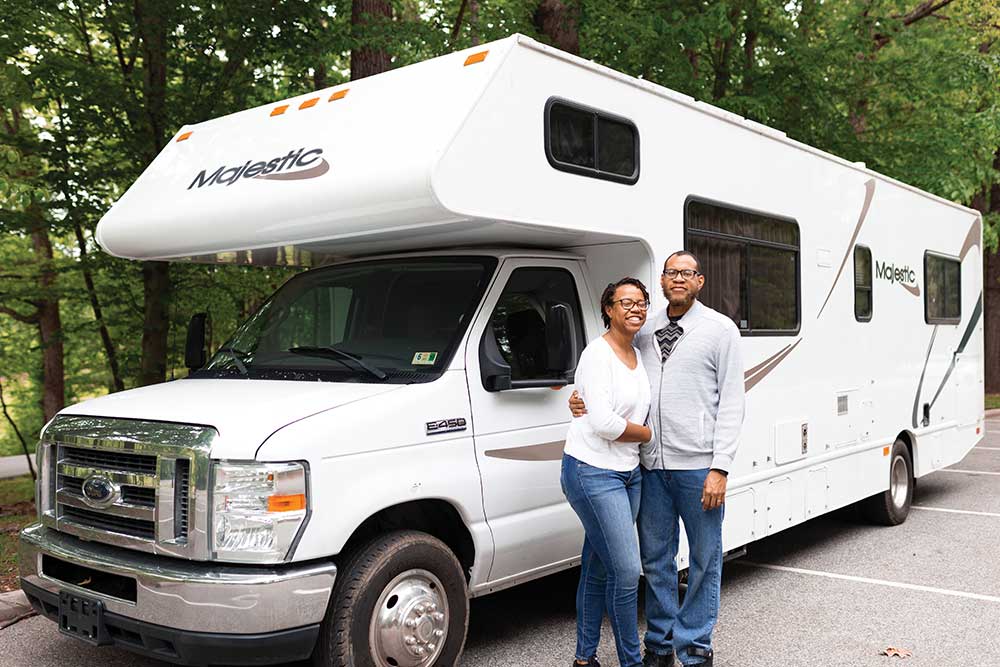
When Alecia and Jamiel Cal-Pin started talking about RVing full time, they were living in a condo in Washington, D.C.
“We were trying to think about the next step, like an apartment or something,” Jamiel said. “That’s the usual plan. You start small and then you work your way up. You buy your first house, and then you get a bigger house because you have kids and stuff. The idea of going from the little condo that we had to then getting into something even smaller was interesting.”
Alecia, whose family had grown up vacationing in RVs, knew what to expect. It took a little more time to convince Jamiel, who didn’t like the seemingly instability of living on the road.
“We were trying to figure out how we can manage our debt, because we both have student loans, and still be able to travel,” Alecia said. “I thought if we live in an RV, our margins would be much bigger. So, when I really gave it to Jamiel as an idea, that’s when he started to reconsider. Maybe this could be a good idea, especially if it’s helping us get out of debt.”
“We’re both relatively young so this seemed like the opportunity to do it,” Jamiel said. “We don’t have kids and we’re not necessarily tied to anything in this area.”
The couple, who go by Fox and Miles on Instagram, have taken to documenting and blogging about transitioning to RV life full-time.
“Learning from other people’s experiences and their mistakes is really valuable, which is one of the reasons we’re sharing our journey,” Alecia said. “We’re learning stuff as we go along. We’re so grateful for YouTube because we learned what to look for when buying an RV, what to ask about.”
In searching for the right vehicle, they wanted something that wouldn’t break the bank but would give them enough space to run their businesses from the road. Alecia is a singer and photographer while Jamiel is a voiceover artist and podcaster.
“We don’t want to go into further debt trying to get out of debt,” Alecia said.
That’s when they came across Cruise America. The used RVs were within their price range and had plenty of room.
Next came the hard part—reducing everything they owned down to what could fit in Darla, their Class C RV.
“That process was laborious and tedious,” Alecia said. “The process for choosing what we would need was really being honest. Have I worn this in the last 30 days or in the last season? Am I going to wear it in the next season coming up?”
As they whittled their stuff down, they donated most of their possessions and moved out of the condo. The couple stayed with Alecia’s mother as they got the RV ready for full-time living, removing the couch to make more room, painting the interior, and installing a solar panel on the roof.
“We’re trying to cut costs wherever we can,” Alecia said. “So, while solar panels are pretty expensive up front, in the long run, they save you money because you don’t have to plug in at an RV camp. Depending on where you are, it can be really expensive, especially the resorts. We don’t need all of that. We just need our basic necessities.”
They had to learn how to deal with various problems as they popped up, from expired tags and inspections to a leaky roof and air conditioner.
“There’s a learning curve,” Alecia said. “Lower your expectations. I think YouTube, and media in general, has this way of glamorizing a lot of things. They don’t show you the ugly side, like the parts where you argue with each other because something’s not working right.”
As for where they will travel, the Cal-Pins will sprinkle in places they’ve always wanted to visit with a few commitments throughout the year, like conferences and visiting family.
“We’re focusing on the national parks,” Jamiel said. “That is another motivation that we have, as we’re going on this journey. We want to highlight the availability of national parks for people of color. We want to be able to go to these places and share our experiences, share our story, and encourage other people of color that these parks out here. All of these beautiful resources are available, and they need to be explored and be embraced.”
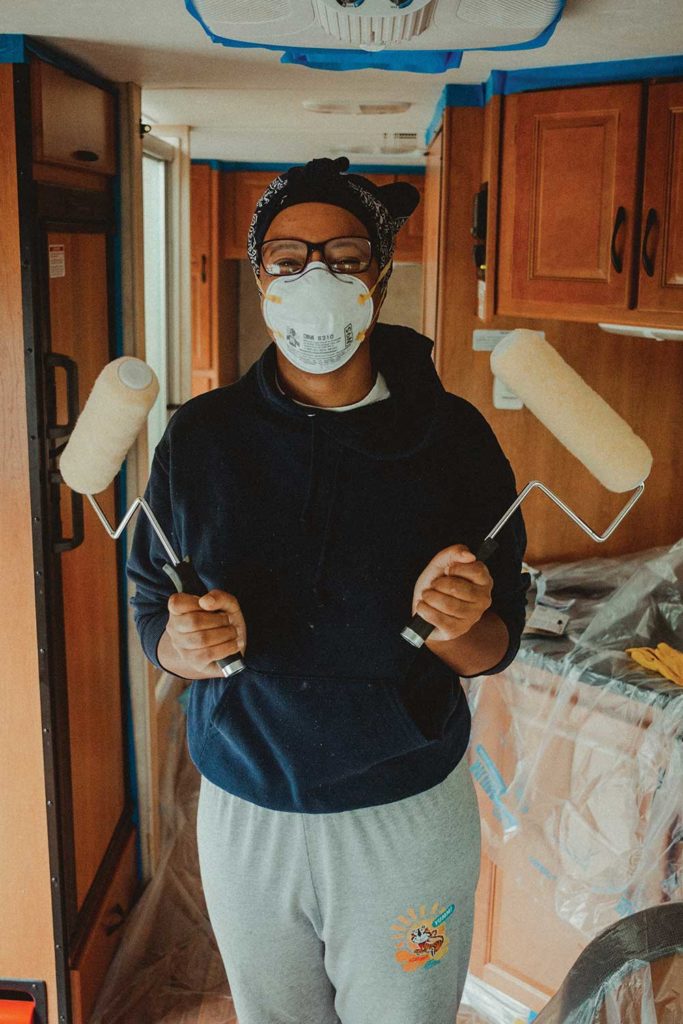
Some family members were worried what the couple might face on the road, traveling while black in America.
“There were some people who expressed concern because that is a reality,” Jamiel said. “It’s not to say that we don’t think we’re going to have a great time or anything like that. Not everybody is racist. But just that reality. If we go back and consider parks and RVing, it was something that was considered what ‘white people’ do.”
Other friends were worried the couple would get tired of each other.
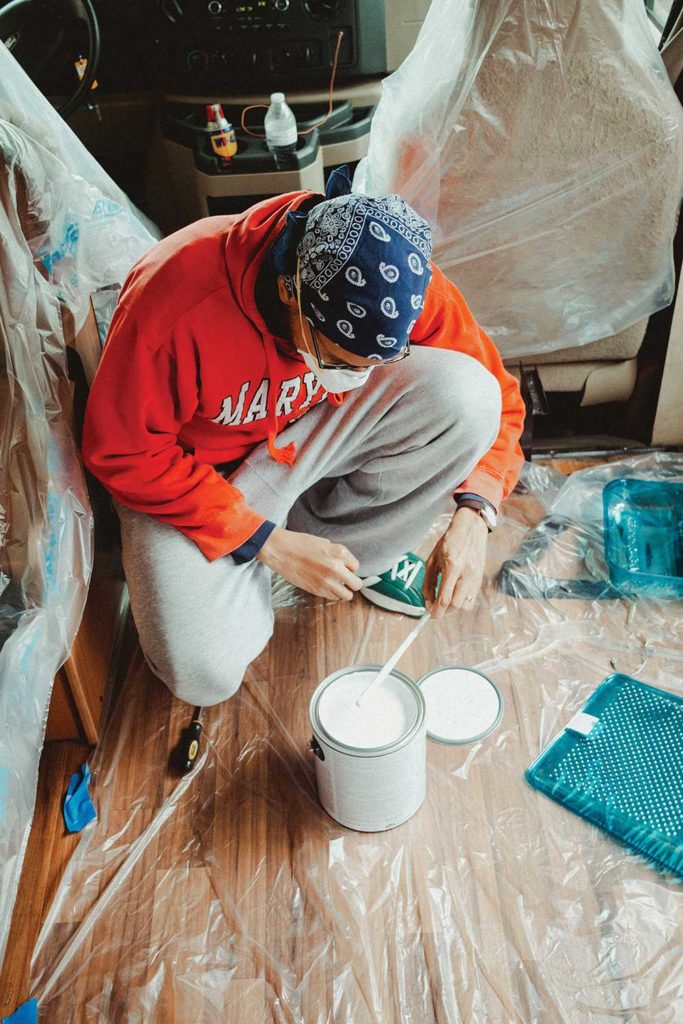
“I don’t think so,” Alecia said. “He’s my best friend. We spend a lot of time together anyway. I do understand that we’ll both need our space. But if there’s anybody that I would want to travel the country with, it would be my husband.”
As they prepare to head out on this journey, Fox and Miles are looking forward to seeing more of the country and growing artistically, together.
Road trip time:
1. Drive the entire length of Shenandoah National Park in Virginia on Skyline Drive, stopping at overlooks and trails along the way.
2. Dive into 300 years of history and fall foliage on Maryland’s Historic National Road.
3. Visit the Chattahoochee-Oconee National Forest in Georgia by way of Scenic Highway 197, a route moonshiners used during prohibition.
